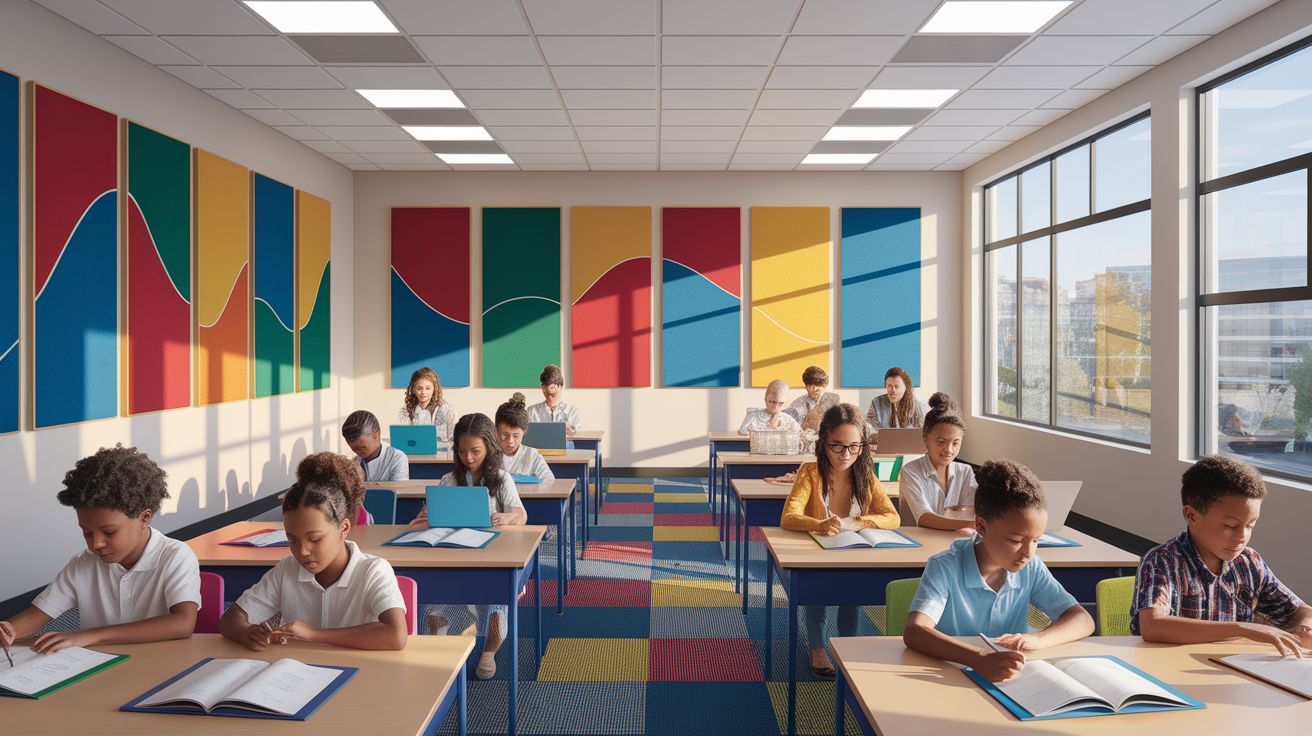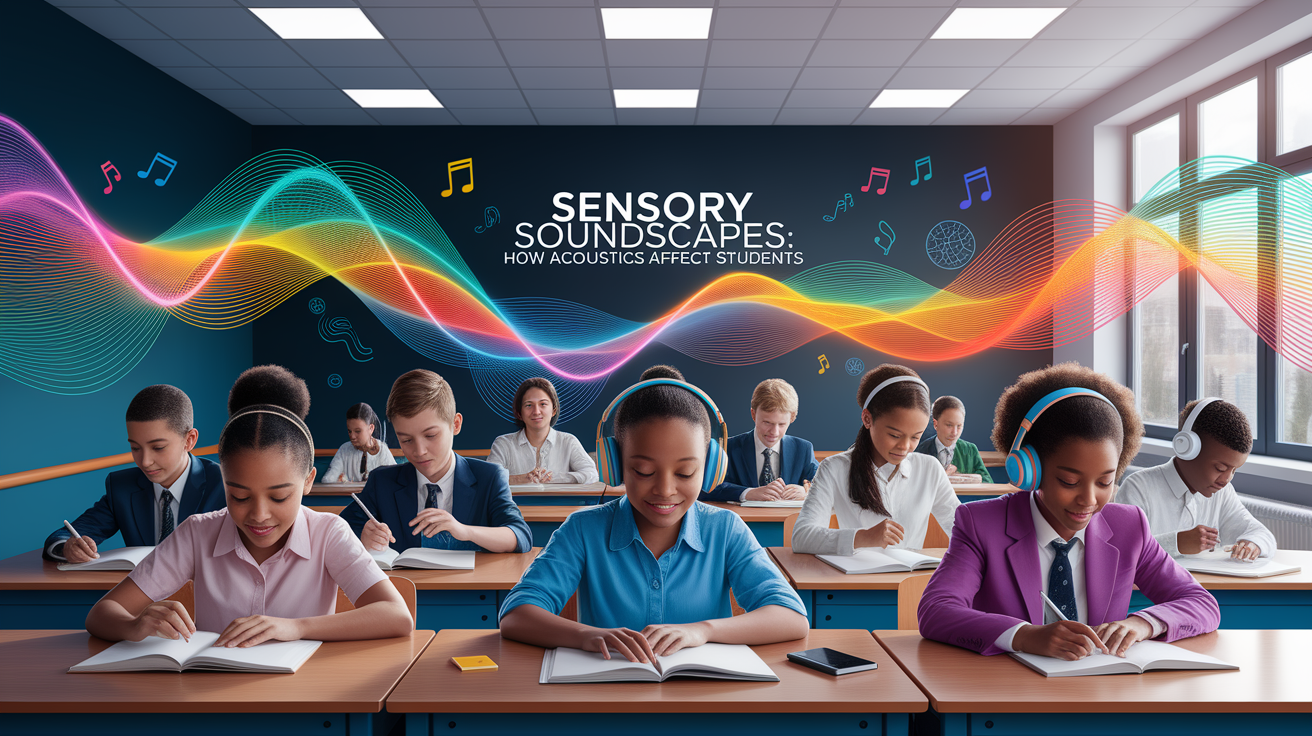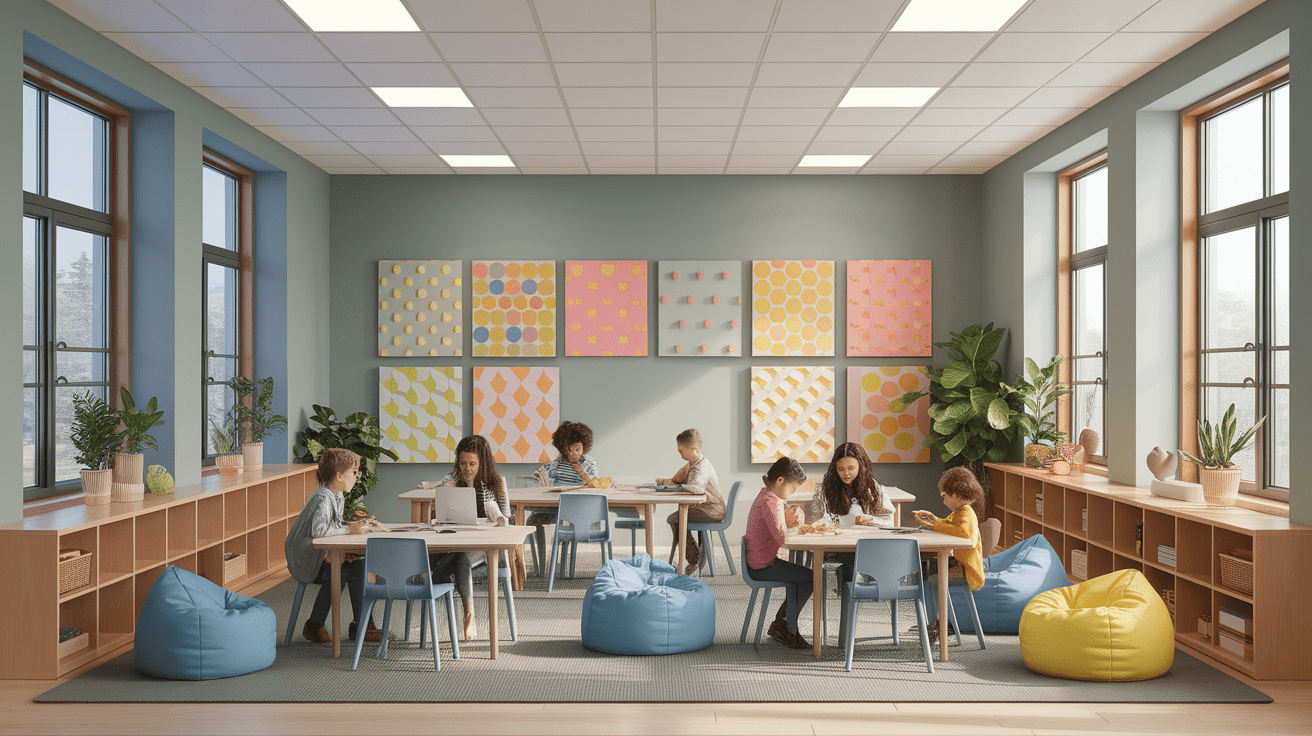Tuned to Learn: Why Classroom Acoustics Matter for Sensory Design
Imagine trying to learn in a room filled with echoes, HVAC hums, and hallway chatter—it’s like trying to read a book while someone keeps waving a flag in front of your eyes! In a classroom, acoustics significantly influence student learning, especially when it comes to speech clarity and focus. The right sound design can turn a noisy, distracting space into a calm, focus-rich environment that supports every learner, including those with hearing impairments or sensory processing needs.

Sensory design works hand-in-hand with acoustics. It’s not just about how things look—it’s about creating a balanced environment that feels comfortable to all the senses. This means noise control, optimal lighting, and temperature regulation, all of which reinforce each other to craft a truly inclusive learning environment.
Sound Fundamentals: Key Acoustic Principles
Before diving into design ideas, let’s get our sound science straight! The main goal in classroom acoustics is to improve speech intelligibility while minimizing distractions from ambient noise like traffic, clanging lockers, or an overly enthusiastic air conditioning system.

- Reverberation Time: Ideally, classrooms should aim for a reverberation time not exceeding 0.6 seconds, as recommended by the World Health Organization. Longer reverberation causes speech sounds to overlap, making words harder to distinguish.
- Sound Absorption: Materials like acoustic panels, carpet flooring, and acoustic ceiling tiles can help soak up sound reflections, improving clarity.
- Background Noise Reduction: ANSI standards suggest keeping noise levels below 35 dB(A) to minimize distractions and support teacher vocal health.
- Sound Transmission Control: Wall coverings, insulation, and proper door seals reduce noise travel between adjoining rooms.
Sensory Soundscapes: How Acoustics Affect Students
A room’s sound environment can shape a student’s ability to focus, process information, and even manage emotions. High background noise and poor room acoustics can strain auditory processing, making lessons harder to follow—especially for learners with sensory sensitivities or autism.

On the flip side, when noise is well-controlled and speech is crisp, classrooms become more equitable. Teachers don’t have to shout, group discussions remain engaging rather than chaotic, and students are less likely to feel mentally fatigued. In the context of sensory-friendly design, managing sound is an essential part of reducing sensory overload, supporting emotional well-being, and encouraging self-regulation.
Acoustic Action: Practical Design Strategies
Ready to fine-tune your classroom into a learning symphony? Here are some strategies that blend acoustic and sensory design:

- Add Sound Absorption: Install fabric wall panels, rugs, or cork boards to dampen echoes. Acoustic ceiling systems and carpet flooring are excellent for lowering reverberation time.
- Control Noise Sources: Choose quieter HVAC systems, place soft bumpers on furniture, and schedule noisy maintenance outside class hours.
- Integrate Sensory Tools: Provide noise-canceling headphones for sensitive students or use a white noise machine as a gentle sound masking option.
- Spatial Planning: Arrange desks and work areas away from external noise sources like windows facing busy roads.
For schools designing from the ground up, integrated soundproofing in sensory rooms can offer both quiet zones and stimulating spaces without cross-interference, keeping everyone’s needs in harmony.
Sustaining Silence: Implementing and Maintaining Acoustic Solutions
Creating a great acoustic setup is one thing—keeping it that way is another! Regular monitoring of noise levels and equipment maintenance ensures your design continues to work its magic.
- Routine Checks: Use a decibel meter to measure background noise occasionally, ensuring it remains within recommended limits.
- Staff Training: Teach educators simple noise control strategies like staggered group activities to reduce simultaneous talking.
- Keep the Gear in Shape: Maintain HVAC systems so they operate quietly and keep sound absorption materials clean and in good condition.
- Evaluate & Adjust: Gather feedback from students and teachers to tweak the setup as needs evolve.
Harmony in the Halls: Final Thoughts on Sensory-Friendly Acoustics
A well-tuned classroom doesn’t just sound better—it feels better. Thoughtful acoustic design, paired with sensory-friendly principles, lays the groundwork for calmer, more productive learning environments. By considering reverberation time, background noise, and sensory needs in unison, we can create spaces that not only improve comprehension but also foster well-being for every learner. Think of it as conducting a symphony where every note—every sound—supports the score of learning success.




